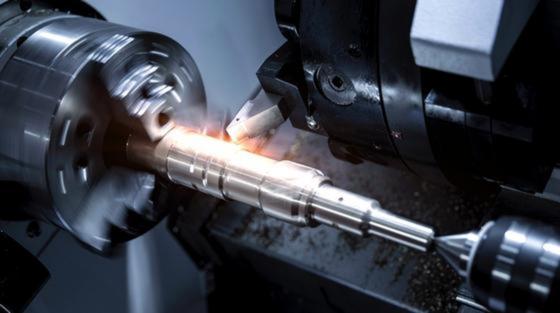Advantages and Disadvantages of Computer Numerical Control

Computer Numerical Control (CNC) technology has transformed manufacturing processes by automating machining operations and offering numerous advantages. However, it also presents certain challenges and limitations. Here are the key advantages and disadvantages of CNC technology:
Advantages of Computer Numerical Control (CNC):
Precision and Accuracy: CNC machines can achieve high levels of precision and accuracy, resulting in consistent and reliable part quality. This precision is essential for manufacturing complex components with tight tolerances.
Increased Productivity: CNC automation reduces the need for manual intervention in machining operations, leading to higher production rates and increased throughput. Machines can operate continuously without the need for frequent adjustments or downtime.
Flexibility and Versatility: CNC machines offer flexibility in production by allowing rapid reprogramming of machining operations. Manufacturers can easily switch between different part geometries and production runs without the need for extensive retooling.
Complex Part Machining: CNC technology enables the machining of complex part geometries that would be difficult or impossible to produce using manual methods. This includes parts with intricate shapes, contours, and features.
Cost Efficiency: While the initial investment in CNC equipment may be significant, CNC technology can lead to cost savings in the long run through increased productivity, reduced scrap rates, and lower labor costs.
Reduced Operator Error: CNC automation minimizes the risk of human error in machining operations, leading to improved consistency and reliability in part production. This helps maintain product quality and reduces the likelihood of defects.
Disadvantages of Computer Numerical Control (CNC):
High Initial Investment: Implementing CNC technology requires a significant initial investment in equipment, software, and training. Small and medium-sized manufacturers may find the upfront costs prohibitive.
Complex Programming: Programming CNC machines requires specialized knowledge and skills in computer-aided design (CAD) and computer-aided manufacturing (CAM). Developing CNC programs can be time-consuming and complex, especially for intricate part geometries.
Maintenance Requirements: CNC machines require regular maintenance and calibration to ensure optimal performance and accuracy. Maintenance tasks may include lubrication, alignment, and replacement of worn components.
Dependence on Electricity and Technology: CNC systems rely on electricity and sophisticated technology for operation. Power outages, equipment failures, or software glitches can disrupt production and lead to downtime.
Skills Gap: Operating and maintaining CNC machines requires specialized skills that may not be readily available in the workforce. Employers may face challenges in finding qualified personnel to operate and troubleshoot CNC equipment.
Limited Flexibility for Small Batch Production: While CNC technology offers flexibility in production, it may not be as cost-effective for small batch production runs compared to traditional manual machining methods. Setup times and programming overheads can make CNC less efficient for small-scale manufacturing.
Despite these disadvantages, Computer Numerical Control (CNC) technology has revolutionized manufacturing processes and continues to play a vital role in modern industrial production. Advances in technology and software have addressed some of the limitations of CNC systems, further enhancing their capabilities and applicability in various industries.
Thank you,